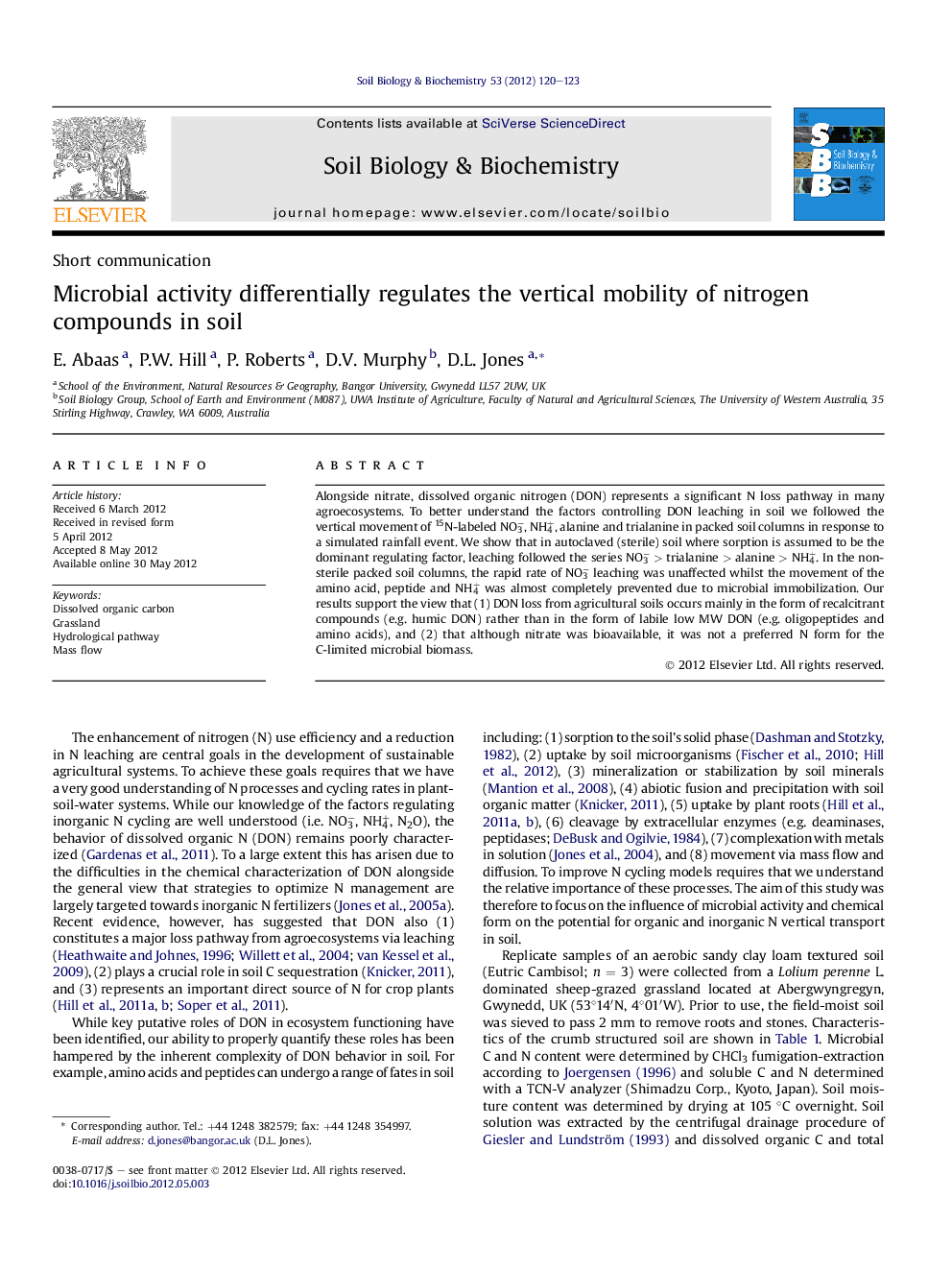| Article ID | Journal | Published Year | Pages | File Type |
|---|---|---|---|---|
| 2024921 | Soil Biology and Biochemistry | 2012 | 4 Pages |
Alongside nitrate, dissolved organic nitrogen (DON) represents a significant N loss pathway in many agroecosystems. To better understand the factors controlling DON leaching in soil we followed the vertical movement of 15N-labeled NO3−, NH4+, alanine and trialanine in packed soil columns in response to a simulated rainfall event. We show that in autoclaved (sterile) soil where sorption is assumed to be the dominant regulating factor, leaching followed the series NO3− > trialanine > alanine > NH4+. In the non-sterile packed soil columns, the rapid rate of NO3− leaching was unaffected whilst the movement of the amino acid, peptide and NH4+ was almost completely prevented due to microbial immobilization. Our results support the view that (1) DON loss from agricultural soils occurs mainly in the form of recalcitrant compounds (e.g. humic DON) rather than in the form of labile low MW DON (e.g. oligopeptides and amino acids), and (2) that although nitrate was bioavailable, it was not a preferred N form for the C-limited microbial biomass.
► Leaching of different organic and inorganic nitrogen forms were studied. ► Leaching in sterile soil followed the series: NO3− > trialanine > alanine > NH4+. ► In non-sterile soil, leaching was greatly reduced for all N forms except NO3−. ► Although NO3− was available, it was not a preferred N form for the microbial biomass. ► Leaching of amino acids and peptides are limited more by microbial consumption than by sorption processes.
